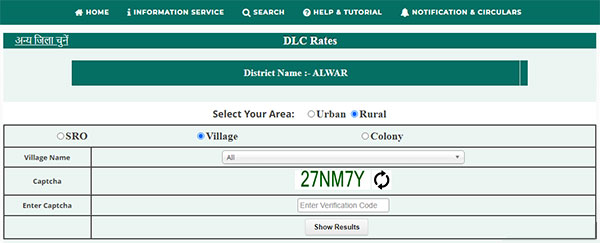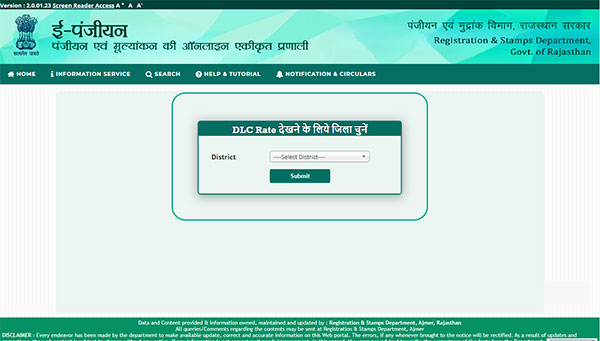DLC Rates Explained: The Foundation of Legal Property Valuation in India
- 16th Apr 2025
- 1143
- 0

Never miss any update
Join our WhatsApp Channel
Property transactions involve numerous technicalities that buyers and sellers must understand to ensure fair dealings. Among these, the District Level Committee (DLC) rate is a crucial factor that directly impacts the financial aspects of property transactions. This comprehensive guide explains what DLC rates are, how they're calculated, and why they matter for anyone involved in real estate transactions in India.
What is the DLC Rate?
The DLC rate (District Level Committee rate) is the minimum value at which stamp duty and registration fees are calculated during property transactions. This government-established benchmark ensures that property isn't registered below a certain value, protecting state revenue and maintaining market stability.

DLC rates vary across different localities, cities, and states in India. Interestingly, this rate goes by different names depending on the state:
- Ready Reckoner Rate in Maharashtra
- Circle Rate in Delhi, Uttar Pradesh, and Uttarakhand
- Guidance Value in Karnataka
- Guideline Value in Tamil Nadu
- Collector Rate in Haryana and Punjab
- Unit Rate in Telangana
- Market Value Guideline in Chhattisgarh and Madhya Pradesh
Regardless of its name, the core concept remains the same: no property transaction can be registered below this minimum value.
How DLC Rates Are Calculated
The state government determines the minimum percentage for land transactions through the District Level Committee. Let's understand this with a simple example:
If the DLC rate for a property in Jaipur is ₹50 lakh and the stamp duty rate is 5%, you would pay ₹2.5 lakh as stamp duty. If the actual market value of the property is ₹70 lakh, your stamp duty would increase to ₹3.5 lakh. However, if the market value is only ₹40 lakh, you would still need to pay ₹2.5 lakh as stamp duty since that is based on the minimum DLC rate.
DLC Rate vs. Market Rate: Which One Applies?
When registering property, two rates come into play: the market rate and the DLC rate. The higher of these two rates determines the basis for calculating stamp duty and registration fees.
Example 1: When DLC Rate is Higher
Let's say you're buying a property where the market value is ₹7,000 per sq. ft., but the DLC rate is ₹7,500 per sq. ft. In this case, you must pay stamp duty and registration fees based on the DLC rate (₹7,500 per sq. ft.) since it's higher than the market rate.

Example 2: When Market Rate is Higher
If you're purchasing a property with a DLC rate of ₹7,000 per sq. ft. but the market value is ₹7,500 per sq. ft., the registration and stamp duty will be calculated based on the market rate (₹7,500 per sq. ft.).
The key takeaway from these examples is that registering any property below the DLC rate is not permitted by law.

Classifications of DLC Rates
DLC rates are classified into four main categories based on property usage:
1. Residential
Properties exclusively used for residential purposes, including rental properties and guest houses.
2. Commercial
Properties used for business purposes such as showrooms, retail shops, restaurants, cinema halls, and multiplexes.
3. Institutional
Educational institutions, medical facilities, government buildings, and community centers.
4. Industrial
Properties registered under the industrial department, including factories and workplaces with ancillary facilities like canteens.
Interior vs. Exterior DLC Rates
DLC rates are further divided into two categories based on location:
Exterior DLC Rate
Applied when the property is situated along a main road. These rates are typically higher due to better accessibility and visibility.
Interior DLC Rate
Applied when the property is not beside a main road. These rates are usually lower than exterior rates.
Both residential and commercial properties follow this interior-exterior classification system.
Impact of DLC Rates on the Real Estate Sector
DLC rates significantly influence the real estate market. To stimulate growth in the sector, governments occasionally reduce stamp duty rates. For instance, the Rajasthan government reduced stamp duty from 6% to 4% in 2021 to encourage home buyers to invest in housing properties.
Developers' Perspective on DLC Rates
Real estate developers often advocate for lower DLC rates. In Rajasthan, developers requested a 30% reduction in DLC rates, arguing that the existing rates were much higher than actual market values, discouraging potential buyers.
In response to such concerns, the Rajasthan government reduced DLC rates by 10% in the 2021-2022 state budget. Additionally, registry rates for flats valued up to ₹50 lakh were reduced from 6% to 4%.
Challenges with DLC Rates
Black Money Circulation
When there's a significant gap between the DLC rate and the market value, it can lead to problematic situations. If the DLC rate is much lower than the agreed-upon price, buyers and sellers might officially register the property at the DLC rate while completing the remaining transaction in cash. This practice increases black money circulation in the economy.
Impact on Buyers When DLC Rates Are Too High
Conversely, if the DLC rate is substantially higher than the market value, buyers end up paying more in stamp duty and registration fees than the property's actual worth. This situation can make properties difficult to sell and disrupt market dynamics.
To avoid these issues, governments periodically revise DLC rates to keep them aligned with current market values.
How to Check DLC Rates
Before purchasing property, it's essential to know the DLC rate for that specific area. Here's how you can check DLC rates in Rajasthan:
- Visit the IGRS (Inspector General of Registration & Stamps) Rajasthan website
- Navigate to the 'E-citizen' tab and click on 'DLC Rate'
- For new DLC rates, you'll be redirected to the e-panjiyan website
Detailed Steps to Check DLC Rates on E-panjiyan:
- Go to E-panjeeyan website
- Click on "e-Value (Online DLC)" on the homepage
- Select your district and click "Submit"
- Choose the area and specify other categories (Urban/Rural, SRO, Zone, Colony)
- Enter the Zone name and Captcha, then click "Show Result"
- The DLC rates will be displayed for your reference
This process is similar to how you can check circle rates in other states like Jharkhand.
Calculating Property Value Using DLC Rates
To calculate the minimum value of a property using DLC rates, use this formula:
Property value = Built-up area of the property × DLC rate of the location
Information Required:
- Property identification details
- Built-up area of the property
- Property type
- Available facilities and amenities
- DLC rate of the chosen locality
Example:
If the DLC rate is ₹5,000 per sq. ft. and the built-up area is 400 sq. ft.:
Property value = ₹5,000 × 400 = ₹20,00,000
This calculated value serves as the minimum amount for computing stamp duty and registration charges during property registration.
Conclusion
DLC rates play a vital role in India's real estate ecosystem by establishing minimum property values for registration purposes. Understanding these rates helps buyers, sellers, and investors make informed decisions and comply with legal requirements during property transactions.
Whether you're buying your first home or investing in commercial property, knowing the applicable DLC rate helps you calculate accurate transaction costs and ensure proper documentation. Regular revisions of DLC rates by state governments aim to keep these benchmarks aligned with actual market conditions, promoting transparency and fairness in property dealings across India.
Frequently Asked Questions
1. Can I register my property below the DLC rate?
No, registering property below the DLC rate is not legally permitted in India.
2. How often are DLC rates revised?
DLC rates are typically revised annually by state governments, though the frequency may vary by state.
3. What happens if I pay less stamp duty than required based on DLC rates?
Paying less stamp duty is considered tax evasion and can lead to penalties, including additional payments and legal consequences.
4. Are DLC rates the same throughout a city?
No, DLC rates vary by locality, with premium areas having higher rates than developing areas.
5. Do DLC rates apply to agricultural land?
Yes, agricultural land has specific DLC rates, usually lower than residential or commercial rates.
6. Can I challenge a DLC rate if I believe it's too high?
You can appeal to the district collector or appropriate authority, but acceptance depends on substantial evidence.
7. How do amenities affect DLC rate calculations?
Properties with premium amenities may have higher DLC rates compared to similar properties without such facilities.
8. Does the age of a property affect its DLC rate?
The age of construction doesn't directly affect the DLC rate, but older properties may be valued differently for transaction purposes.

 Admin
Admin

Comments
No comments yet.
Add Your Comment
Thank you, for commenting !!
Your comment is under moderation...
Keep reading blogs